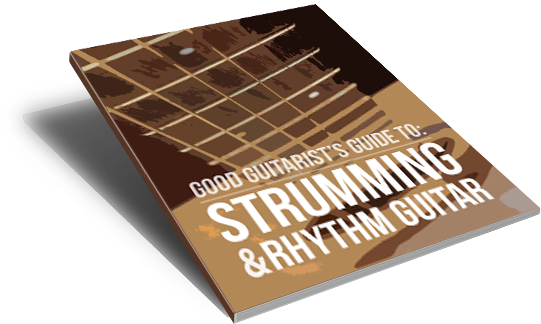5 Steps to Fix Your Rhythm and Sound More Musical on Guitar
Struggling with rhythm on guitar? In this lesson, I show you 5 simple steps to tighten up your timing and sound more musical – even as a beginner!
5 Steps to Fix Your Rhythm and Sound More Musical on Guitar
Let’s be honest here… 99.99999% of the time, when someone says they don’t sound musical – or they feel bad about their playing – it all comes down to one thing: bad rhythm.
That’s why in today’s lesson, I’m going to walk you through five simple steps that will help you clean up your rhythm and sound more confident and musical on guitar. You can do all five steps today. Then repeat them tomorrow. And the day after. And before you know it, they’ll become second nature.
By the time you finish practicing these, nobody will ever say you have shaky or rough rhythm again.
Step 1: Make a Playlist and Count Along
Start by making a playlist of 5 to 10 songs you dream of playing on guitar. Use Spotify, CDs, a record player – anything works. Then, each day, put on that playlist and count along to the beat.
Just set aside 20–30 minutes, crank your favorite tunes, and count 1-2-3-4 along with them. That’s it.
Step 2: Clap Along
Once you’re comfortable counting, it’s time to clap. This step helps tighten your rhythm. When we speak or count, there’s a wider margin for error. But when we clap, our timing has to be precise.
That precision is what makes music sound tight – it’s not just a cool word people throw around in music school. Tight rhythm means you’re locked in with the beat.
Step 3: Strum With Muted Strings
Now let’s bring it to the guitar.
Mute your strings with your fretting hand and strum just the rhythm. This creates a clicky, percussive sound that forces you to be more precise, just like clapping. Start with simple downstrokes in time with the music.
Step 4: Add Counting and Upstrokes
Next, while continuing to strum muted strings, count out loud: 1 – 2 – 3 – 4.
Then take it a step further by adding upstrokes in between. Go:
1 and 2 and 3 and 4 and
Make contact on the upstrokes too – don’t just breeze past the strings. This gives you a more balanced, full rhythm.
Step 5: Create Strumming Patterns by Missing Strokes
Now that you’re feeling the beat, here’s the fun part: strumming patterns happen when you skip or miss certain downstrokes and upstrokes.
You don’t need to memorize charts. Just focus on keeping the rhythm steady, and choose which strums to hit and which to miss. That’s how you develop strumming patterns that feel and sound tight.
Want to Go Deeper?
If you enjoyed this lesson, you’ll love my course Strumming Made Simple. It’s a complete rhythm training journey with over 50 lessons, a workbook, and access to the private GoodGuitarist community where you can get feedback from me and other learners.
Have fun practicing, and I’ll see you soon!
All-Access Pass
Start your 10-day FREE trial
- Step-By-Step Courses
- Exclusive YouTube Bonuses
- Q&A with James






